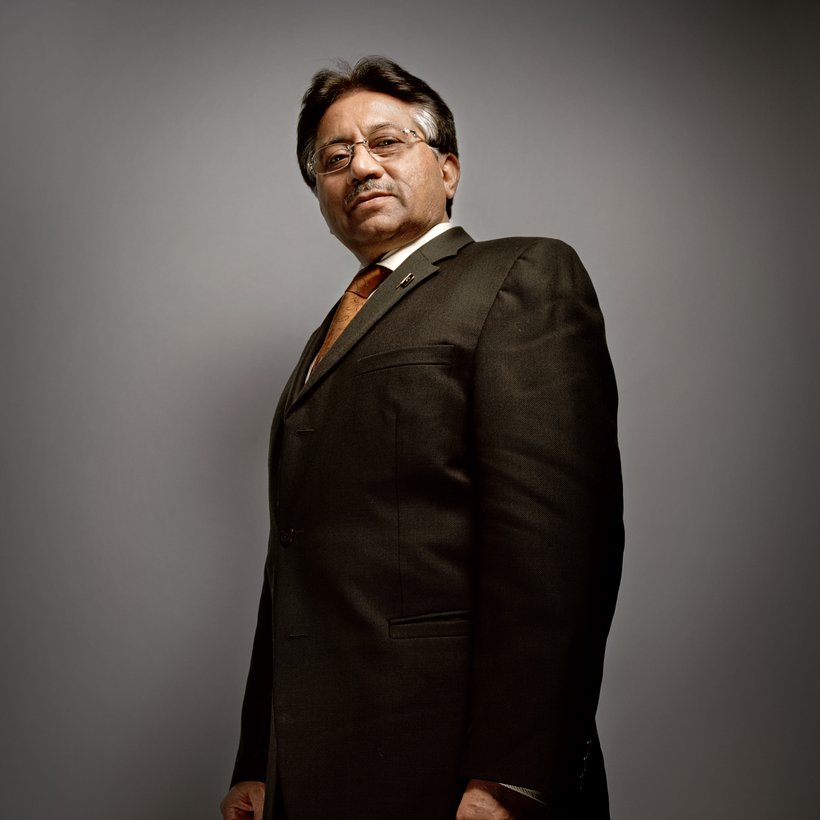
The Many Suits of Pervez Musharraf
Air Mail
March 28, 2023
In 2017, I was helping Bob Woodward, the legendary Washington Post reporter, prepare for an onstage interview at Yale University. The interviewee was Pervez Musharraf, the former president and dictator of Pakistan, who died last month.
The room was packed with students from America, India, and Pakistan, all of whom would had been children during Musharraf’s rule. Musharraf strode onto the stage in a dark-blue suit, looking a little heavyset, and took his seat with his hands clasped on his lap.
“You know about controversy and you will not shy away from it,” Woodward began.
“Yes indeed,” Musharraf responded, an Urdu lilt in his voice.
“I think it can safely be said that you’re the only person in the room here who’s staged a coup,” said Woodward.
There were murmurs of laughter in the audience. Musharraf stared for a moment, silent. Then he smiled and laughed. As the audience quietened down, Musharraf gestured with his hand as if to brush away the insinuation of wrongdoing, reaffirm all his past decisions, and leave his own epitaph.
“But Pakistan …” he said, “I am proud of it.”
For almost a decade—from 1999 to 2008— General Musharraf was Pakistan’s supreme leader, and the West’s greatest ally in the war on terror. During those years, Musharraf seemed to be everywhere—in the Oval Office, at Davos, beamed via bootleg satellite dishes into my diasporic home, in Canada. And what cemented him, visually, to the West more than anything? His suits.
Musharraf’s suits signaled to Western audiences that he was neither a military despot nor a tribal insurgent. When speaking to an international audience, he generally steered clear of the traditional shalwar kameez. He wore Pakistan’s national dress mainly at political rallies at home, and, later, at his corruption trial.
For Musharraf, the suit offered a convenient camouflage. When he wore one, no one asked him about his coup in 1999. No matter that, as the powerful chief of army staff, Musharraf had provoked a nuclear crisis with India in 1999, and then had the sitting Pakistani prime minister arrested after dramatically circling the skies of Karachi in a military airplane. At the time coups were not the vernacular of men in suits.
It was in the early days of the war on terror that Musharraf could be seen dressed in Armani, cut sharply down the shoulder, boxed and square, in dark blue and gray. The suits gave his stodgy frame some much-needed shape, and leant him an air of familiarity. Amid the newscasts depicting the Taliban, Osama bin Laden, and the Saudi royal family, Musharraf seemed to Westerners like the one person from the region who was “like us.”
Indeed, the relationship between the West and the general was best summed up two months after 9/11, when Salon published a gushing piece entitled “My Crush on Musharraf,” in which the writer likened Musharraf to a “gentle uncle figure” and a “new Homecoming King,” and gushed over the fact he was both a “Muslim and a man of the world,” lauding how he petted his dog, played golf, drank alcohol, and wore suits.
Musharraf was more than happy to play this role, but what else could he do? In his memoir, he recalled the United States deputy secretary of state telling him that Pakistan would be bombed back to the Stone Age if he didn’t help. So he accepted $10 billion in aid, even while his country’s intelligence services were funding and supporting the very same jihadists Musharraf had publicly vowed to destroy. He played both sides against the middle, and many Pakistanis still praise him for helping rid the country of al-Qaeda and the United States.
Pakistan is currently mired in economic catastrophe. Democracy has ruptured, with the troubled government of Imran Khan—who wore suits during his London playboy days but preferred the shalwar kameez during his premiership—having been ousted in April 2022. Last week Khan’s supporters clashed with police as he appeared in court on corruption charges that he says are politically motivated.
My relatives in Pakistan today tell me that the country’s leadership is clueless, and the country is headed off a cliff edge. Only the length of the fall is in dispute. Some yearn for the rule of Musharraf, who with each passing day looks better by comparison. Then again, he always did.